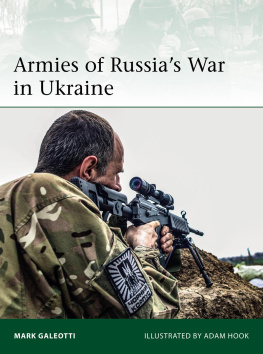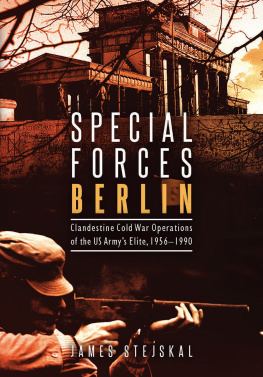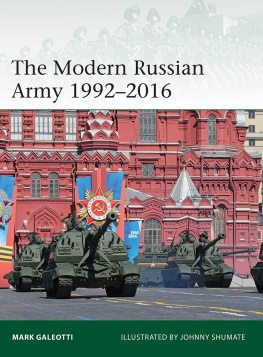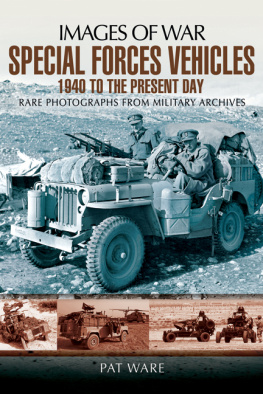
This electronic edition published in 2015 by Bloomsbury Publishing Plc
Bloomsbury is a registered trademark of Bloomsbury Publishing Plc
First published in Great Britain in 2015 by Osprey Publishing
PO Box 883, Oxford, OX1 9PL, UK
PO Box 3985, New York, NY 101853985, USA
E-mail:
Osprey Publishing, part of Bloomsbury Publishing Plc
2015 Osprey Publishing Ltd.
All rights reserved
You may not copy, distribute, transmit, reproduce or otherwise make available this publication (or any part of it) in any form, or by any means (including without limitation electronic, digital, optical, mechanical, photocopying, printing, recording or otherwise), without the prior written permission of the publisher. Any person who does any unauthorised act in relation to this publication may be liable to criminal prosecution and civil claims for damages.
A CIP catalog record for this book is available from the British Library
Print ISBN: 978-1-47280-722-9
PDF ebook ISBN: 978-1-4728-0723-6
ePub ebook ISBN: 978-1-4728-0724-3
Editor: Martin Windrow
Maps by JB Illustrations
Typeset in Sabon and Myriad Pro
Osprey Publishing is supporting the Woodland Trust, the UKs leading woodland conservation charity, by funding the dedication of trees.
www.ospreypublishing.com
To find out more about our authors and books visit www.bloomsbury.com. Here you will find extracts, author interviews, details of forthcoming events and the option to sign up for our newsletters.
AUTHORS NOTE
Translating out of Cyrillic always poses challenges. I have chosen to transliterate names as they are pronounced, and I have also ignored the diacritical soft and hard signs found in the original. The only exceptions are names that have acquired common forms in English for example, I use the spelling Gorbachev rather than the phonetically correct Gorbachov.
REFERENCES
See Elite 197, Russian Security and Paramilitary Forces since 1991
See Essential Histories 69, The Russian Civil War, 191822
See Men-at-Arms 497, Armies of the Russo-Polish War 191921
See Warrior 171, Soviet Partisan 194144
See Elite 148, The Hungarian Revolution 1956
See Essential Histories 78, Russias Wars in Chechnya 19942009
GLOSSARY
Glossary of acronyms used in this text:
| ChON | Chast osobogo naznacheniya Special Purpose Unit |
| FSB | Federalnaya sluzhba bezopasnosti Federal Security Service |
| GRU | Glavnoye razvedyvatelnoye upravleniye Main Intelligence Directorate (of the General Staff), military intelligence |
| KGB | Komitet gosudarstvenny besopasnosti Committee of State Security |
| KSO | Komanda spetsialnogo naznacheniya Special Operations Command |
| MVD | Ministerstvo vnutrennikh del Ministry of Internal Affairs |
| NKVD | Narodny komissariat vnutrennikh del Peoples Commissariat of Internal Affairs |
| ObrON | Otdelnaya brigada osobennogo naznacheniya Independent Special Purpose Brigade (of Interior Troops) |
| oBrSn | Otdelnaya brigada spetsialnogo naznacheniya Independent Special Purpose Brigade (of Spetsnaz) |
| OGBM | Otdelny Gvardeisky Batalon Minyerov Independent Guards Sapper Battalion |
| OGPU | Obyedinyonnoye gosudarstvennoye politicheskoye upravleniye Joint State Political Directorate |
| OKSVA | Ogranichenny Kontingent Sovietskikh Voisk v Afganistane Limited Contingent of Soviet Forces in Afghanistan |
| omrpSpN | Otdelny morskoy razvedyvatelny punkt Spetsialnogo naznacheniya Independent Special Purpose Naval Reconnaissance Point (Naval Spetsnaz brigade) |
| ooSn | Otdelny otryad spetsialnogo naznacheniya Independent Special Purpose Detachment (effectively, a Spetsnaz battalion) |
| opSn | Otdelny polk spetsialnogo naznacheniya Independent Special Purpose Regiment |
| orSn | Otdelnaya rota spetsialnogo naznacheniya Independent Special Purpose Company (of Spetsnaz) |
| orrSn | Otdelnaya razvedyvatelnaya rota spetsialnogo naznacheniya Independent Special Purpose Reconnaissance Company |
| Spetsgruppa | Generic term for a special forces group (plural, spetsgruppy) |
| Spetsnaz | Spetsialnogo naznacheniya of Special Purpose, or Designation i.e. special forces |
| TsSN | Tsentr spetsialnogo naznacheniya Special Purpose Center |
| VDV | Vozdushno-desantnye voiska Air Assault Troops (paratroopers) |
| VV | Vnutrenniye voiska Internal Troops (under Ministry of Internal Affairs) |
CONTENTS
Special Purpose Units and diversionary troops Spain and Finland
GRU Independent Spetsnaz Recon Companies 1950: the first Naval Spetsnaz brigades 1957: the first GRU Spetsnaz battalions Spetsnaz units, 1982
Uncertainties and reductions
SPETSNAZ : RUSSIAS SPECIAL FORCES
INTRODUCTION
The Spetsnaz, Russias military special forces, have earned an extraordinary reputation for effectiveness, ferocity, and skill. At the same time they are little understood, and are often mythologized both in Russia and the West. There is an assumption that they are a force of soldiers to rival Britains SAS or the US Delta Force (some of them are; most are not). There are tales of covert assassinations and macho heroics, feeding a belief that they are simultaneously soldiers, spies, and saboteurs (a few do perform in all three roles, but most are best considered simply as well-trained intervention forces).
The Spetsnaz are, to be sure, an effective force, whose soldiers were the best the former Soviet military could field, and who maintain those standards in todays Russian Federation forces. They have been the tip of the spear in Moscows military interventions and operations for many decades, from early Bolshevik units sent to fight insurgency in Central Asia in the 1920s, through covert deployments in the Spanish Civil War, to running partisans during World War II, and leading the invasions of Czechoslovakia in 1968 and Afghanistan in 1979. Since the collapse of the Soviet Union in 1991 they have fought in Chechnya, in Central Asia and, most recently, in Ukraine. (In another sense, they have also faced turf wars launched by other agencies resentful of their control by the GRU military intelligence directorate.) Increasingly, the Spetsnaz are at the heart of a new Russian way of war that emphasizes speed, surprise, and deception over massive conventional force, and their skills ensure that they will maintain their special status into the future.
Indeed, in many ways the Spetsnaz concept is a counterpoint to the traditional strengths and weaknesses of the Russian Army: large, determined, but also lumbering, and lacking in initiative and lan. As Stephen Zaloga notes in his book Inside the Blue Berets, the visionary 17th-century Tsar Peter the Great had written of his dream of a flying corps a force so constituted that it can act without encumbrance in every direction, and send back reliable information of the enemys doings at the disposal of the general, whether to cut off the enemy, deprive him of a pass, attack his rear, or fall on his territory and make a diversion. In the Spetsnaz the Soviets and Russians acquired just such a force.














